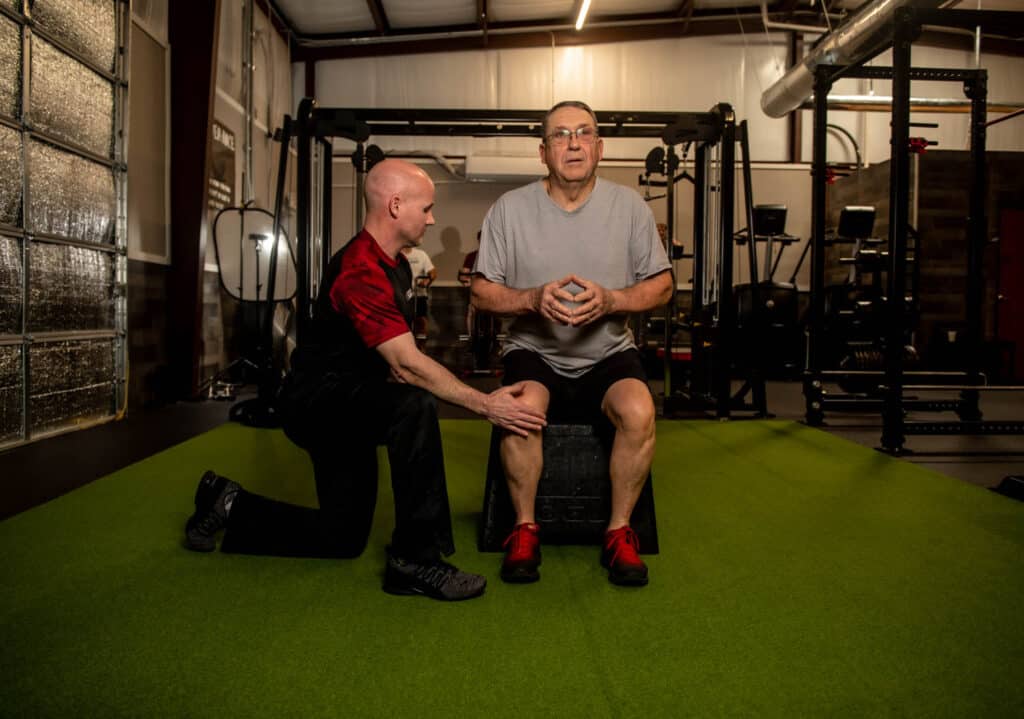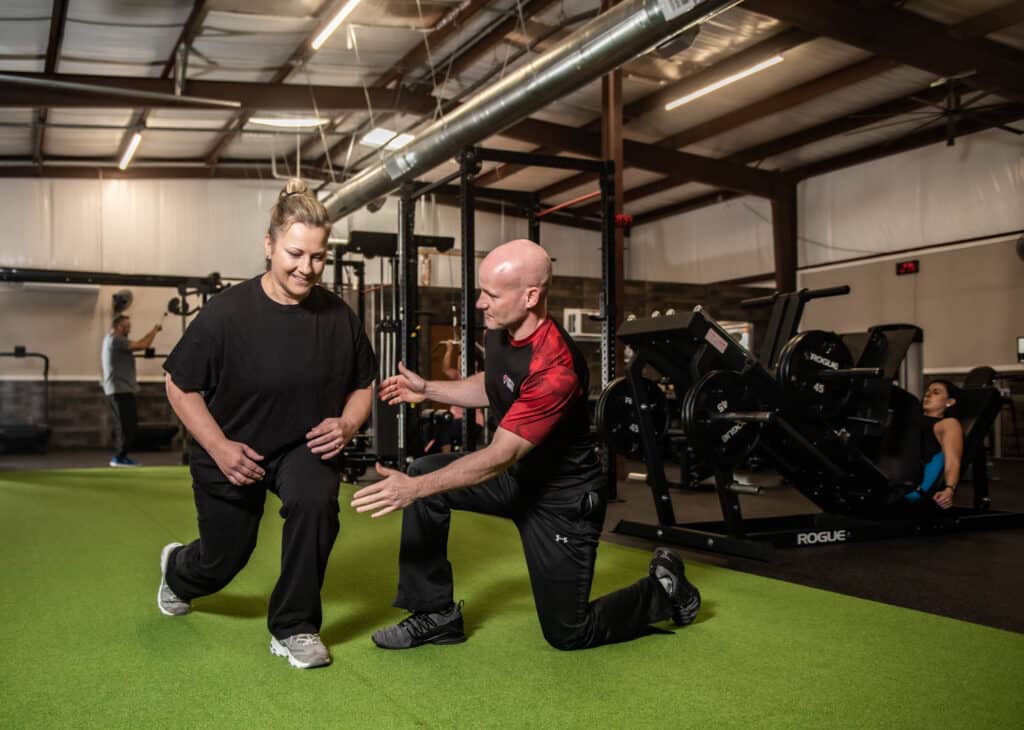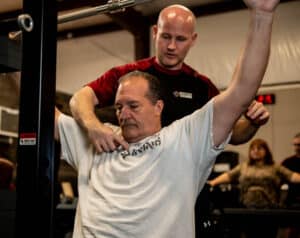By Kelcee Lyons
What if you could help increase the quality of your daily life? As in, little to no physical pain? Future Fitness Training wants you to “Build A Better Body for Tomorrow” so that you don’t feel like you can’t get on the floor and play with your little ones or go on an amazing adventure that is going to involve a lot of walking and/or physical activity by providing you tools and accountability with restorative training.
What exactly is Restorative Training? How does it help me? These are questions that you may be asking yourself. Restorative training focuses on your fitness goals while incorporating corrective exercises to help restore your health, strength, and overall well-being. Everything you do today will define who you are later in life. Whether it’s your first time in the gym or you’re an athlete. We will meet you at your fitness level! Let us help empower you to live the life that you want!
Below are four reasons why restorative training is so important and the benefits that it provides.
1. Restorative Training Optimizes Movement Quality
What does this mean? Do you wake up in the morning, and your joints are already talking to you? Joint pain is very common in today’s society. It may be caused by muscle weakness, a reduced range of movement (perhaps following injury), or unnatural stresses that are put onto joints due to poor posture or injury of another body part. For example, people with a “bad back” may put unnatural stress on one hip, leading to hip joint pain. This is where restorative training comes to play.

Our Fitness Specialists are dedicated to Corrective Exercise. Corrective exercise helps both you and your Fitness Specialist do three things:
- Identify the source of pain.
- Have a plan of action to address that pain.
- Apply corrective strategies to reduce, if not rid, the pain.
When you first meet with a Fitness Specialist, you will be taken through an individualized assessment. This helps the Specialist identify how your body prefers to move based on your lifestyle and where, if any deficiencies, are originating. Then, a program is designed to your goals and needs to provide a safe and effective exercise experience. All the exercise programs are evidence based. The objective of personalizing an exercise program is to optimize the movement quality catered only to you!
2. Restorative Training helps to Correct Poor Posture
We all have muscle imbalances that can cause the muscles to play tug-of-war with each other. This puts extended pressure on the joints. Restorative training incorporates corrective exercises, which are a series of simple movements or changes in posture. When performed on a regular basis, these exercises begin to address the causes of pain. The right sets of exercises can help a wide range of different joint, muscle, and/or postural deviations. If you’re suffering from joint pain, have an injury, or have poor posture, our team can provide corrective exercises to help you live better. Schedule a time to tour our facility or book your free 7-Day Trial with us.
So we have touched the outer edge of how Restorative Training works, but what does it actually do to your body? Performing corrective exercises can help you have a better quality of life along with:
- Promote healing by increasing blood flow to painful areas.
- Strengthen the muscles around a joint, leading to greater joint stability.
- Enhance range of movement by improving mobility.
- Promote optimal joint positioning during movement and helps to reduce swelling.
- Enhance mental and physical well-being as people become more active and pain levels are reduced.
3. Restorative Training Enhances Performance
Have you ever heard of the Zig-Zag Theory? Physicians, kinesiologists, therapists, etc, look to judge the posture of the human body. In short, this is how it works. Let’s say your right shoulder is bothering you – more than likely there’s something going on with your left hip, down to your right knee and probably rooting from that left ankle/foot. Most of the time, that shoulder that has been bothering you, may not be the root cause of the problem.

When you first start training with a Fitness Specialist, you may notice that some exercises seem very challenging. After a few weeks of performing restorative exercises, you start to notice that you can do that same exercise with more ease or maybe a progressed version of it now. You’re growing stronger and increasing your functional capacity. Why does it matter? As we age, our bone density decreases. Staying active and weight training can help to slow that process.
Restorative training helps your body perform daily functions with more ease. For example, that adventure you were dying to go on with all the physical activity and hiking probably won’t be that bad with a body that is used to moving around and being active.
4. Restorative Training is based on a Structured Program
This first step in correcting posture (aka muscle imbalances) is to reduce the tension of tight muscles. This is done by myofascial rolling. Myofascial rolling helps to break up the tension in the muscle tissue, which than lengthens the muscle to its optimal length. Giving more elasticity to the muscles helps the muscle work to their full potential when exercising
Stretching helps to increase the range of motion at a joint. It also increases tissue extensibility – gives the muscles the ability to work more efficiently. I get it, stretching takes time and may hurt and be boring, but it’s worth it – it decreases the risk of muscle and tendon injury.
The first two steps are vital to the health of your joints. If you attempt to strength train when you’re experiencing movement restrictions in your joints, your body will overexert itself and create less-than-optimal results.

Activate the muscles that aren’t neurologically working and re-teach them to start working more! Isolated strengthening helps increase the force production capabilities of every muscle action. This step helps the muscles to be more balanced, so they aren’t playing tug-of-war anymore.
The last step hones in on re-training the collective function of all muscles. Finding and working on the root issue helps the overall goal and vision! That’s what our Fitness Specialists are great at. They’ll help you turn your vision into a reality. Are you willing to take the first step towards it and let us help you? Experience a free session with a Fitness Specialist to get an idea of what restorative training is like for you.
One last thing to really start thinking about. As healthcare costs increase, emphasis on preventive care has become a priority. Restorative training helps with identifying problematic areas before it leads to other unwanted problems. Correcting any underlying issues can help prevent injuries and pain.
One of the most common global health problems is low-back pain and it can create a burden in all areas of our daily lives. One major cause of low-back pain is sitting for extended periods of time. The CDC states that 25% of Americans sit more than eight hours a day! You may experience radiating pain or a sharp and stabbing ache in your back. If so, your body is trying to communicate with you that something is wrong. You’re not in it alone either – roughly 16 million people experience chronic back pain.
When you sit for a long time, the following changes occur in your spine:
- Increased pressure within each spinal segment
- Reduced strength in the muscles of your upper and lower back
- Decreased nutrient supply to the spinal tissues
These changes can lead to serious issues and potential surgeries. Invest in your restorative training with us and avoid the possibility of a more than $100,000 hospital bill and up to six months, if not more, of healing from a back surgery. If your doctor suggests surgery, ask about restorative and corrective exercises first especially if you want to avoid the surgery. Either way, getting to or maintaining a healthy weight and muscle/fat mass can help you in your recovery from surgery.
Want to know more on how to alleviate your back pain? Fill out this questionnaire for tips and insights to help you “Build A Better Body For Tomorrow.”
See What We Have to Offer
Restorative training can accomplish things that may seem unimaginable. Hear it from our members who were on the verge of giving up but with the help of FFT, were able to correct their ailments. Remember that building a better body is a process. We believe that with perseverance, the results you’ve been dying to get to will happen! See if Future Fitness Training is right for you – we aren’t a gym for everybody. Regardless of your activity level or whether you’re experiencing muscular dysfunction or not, you can benefit from having a Fitness Specialist that is skillful in Corrective Exercise. Start moving with us here to restore your health, strength, and overall well-being.
*Disclaimer
Fitness Specialists are not in the scope of practice to treat any musculoskeletal injury but to reduce the likelihood – think of this as preventative maintenance. However, their skills can be applied post-injury.




